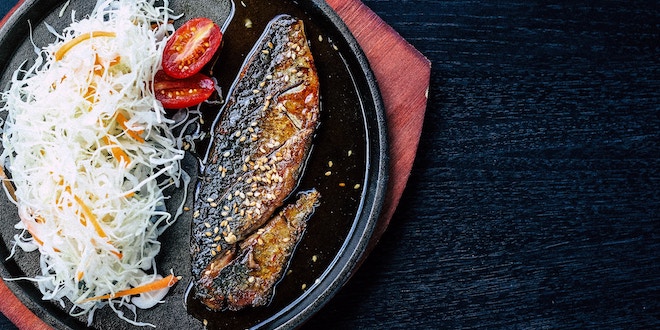Last Updated on November 10, 2023
Asian cuisine is renowned for its bold and diverse flavors, and at the heart of this culinary magic are the incredible array of Asian seasonings. Whether you’re a seasoned home chef or just starting your culinary journey, understanding how to use Asian seasonings can elevate your dishes to new heights. In this guide, we’ll take you on a flavorful journey, exploring key seasonings, offering tips and tricks, and providing insights into the cultural tapestry that is Asian cuisine.
Key Asian Seasonings
Soy Sauce
Soy sauce, a fundamental component of Asian cuisine, boasts a history dating back centuries. From its origins in China to its various regional adaptations, the varieties of soy sauce offer a spectrum of flavors, from light and salty to dark and robust.
Soy sauce varieties range from Japanese shoyu to Chinese light and dark soy sauces. Each has a unique taste profile, making it essential to choose the right one for your dish.
Versatility is soy sauce’s strength. Whether used as a marinade, dipping sauce, or stir-fry seasoning, its umami-rich taste enhances a wide array of dishes.
Explore the nuanced uses of soy sauce in different Asian cuisines, from imparting depth to sushi to elevating the umami in a classic bowl of ramen.
Fish Sauce
Fish sauce, a staple in Southeast Asian cooking, has roots tracing back to ancient times. Its deep cultural significance is reflected in its incorporation into traditional dishes.
Uncover the cultural importance of fish sauce in Thai, Vietnamese, and Filipino cuisines, and how it adds a unique umami depth to recipes.
Learn the art of using fish sauce judiciously to enhance the savory notes in your dishes without overpowering other flavors.
Experiment with incorporating fish sauce in marinades, dressings, and dipping sauces to experience its umami-boosting magic.
Sriracha
Sriracha, the beloved spicy condiment, originated in Thailand and has become a global sensation.
Discover the cultural roots of Sriracha and its transformation from a Thai hot sauce to a versatile flavor enhancer in diverse cuisines.
Move beyond the classic Sriracha drizzle on noodles or pizza. Unleash your creativity by incorporating Sriracha into unexpected dishes for a delightful kick.
Experiment with Sriracha-infused cocktails, marinades, and even desserts to add a spicy twist to your culinary creations.
Ginger and Garlic
Ginger and garlic, the dynamic duo of Asian cuisine, contribute aromatic depth to a myriad of dishes. Understanding their roles is key to mastering their flavors.
Delve into the individual characteristics of ginger and garlic and how they complement each other to create a symphony of flavors in your dishes.
Unlock the full potential of ginger and garlic by exploring various preparation techniques. From minced and sautéed to finely grated, each method imparts a distinct flavor to your dishes.
Learn how to balance the intensity of these aromatics to enhance the overall taste without overpowering the palate.
Five-Spice Powder
Five-spice powder, a cornerstone of Chinese cuisine, is a symphony of flavors featuring star anise, cloves, Chinese cinnamon, Sichuan pepper, and fennel seeds. Understanding its components is key to wielding its power.
Break down the components of five-spice powder and explore how the blend creates a harmonious balance of sweet, savory, and aromatic notes.
While traditionally used in savory dishes, don’t overlook the sweet possibilities of five-spice powder. Experiment with desserts and beverages to discover its surprising versatility.
From savory stir-fries to spiced desserts, embrace the diverse applications of five-spice powder in your culinary experiments.
Tips and Tricks for Using Asian Seasonings
Balancing Flavors
The key to a memorable Asian-inspired dish lies in achieving the perfect umami balance. Understand the interplay of sweet, salty, sour, and bitter notes. Experiment with adjusting the ratios of soy sauce, fish sauce, and other umami-rich ingredients to find the ideal flavor harmony in your dishes.
While the temptation to intensify flavors is strong, avoid the pitfall of over-seasoning. Learn to trust your taste buds and add seasonings gradually. Discover the art of subtle seasoning, allowing the natural flavors of ingredients to shine while enhancing them with the magic of Asian seasonings.
Pairing Suggestions
Different Asian cuisines pair best with specific seasonings. Dive into the nuances of pairing soy sauce with Japanese dishes or fish sauce with Vietnamese delicacies.Explore the regional specificity of pairings to infuse authenticity into your culinary creations.
Break free from convention and experiment with unexpected flavor combinations. Discover how seemingly contrasting seasonings can come together to create a symphony of tastes.Challenge your palate by combining diverse Asian seasonings to create unique and memorable flavor profiles.
Incorporating Asian Seasonings in Everyday Cooking
Embark on your Asian seasoning journey with easy-to-follow Asian recipes. Start with classics like fried rice or simple stir-fries to build your confidence.Gradually incorporate these seasonings into your everyday meals, making the exploration of Asian flavors an accessible and enjoyable experience.
Transform your go-to recipes by infusing them with the vibrant flavors of Asian seasonings. From salads to soups, discover how a touch of soy sauce or ginger can elevate familiar dishes.Use Asian seasonings as a creative tool to breathe new life into your staple recipes, surprising your taste buds with each delightful twist.
Cultural Insights
Asia is a tapestry of contrasting flavors, from the subtle elegance of Japanese cuisine to the fiery intensity of Sichuan dishes. Its diverse flavor profiles span East to Southeast Asia. To master the art of using Asian seasonings it is crutial to understand how the distinct tastes of each region are shaped by cultural influences, climate, and historical traditions.
Uncover the rituals and traditions that make each seasoning a cultural treasure. Gain a deeper appreciation for the cultural significance of seasonings, recognizing them as more than just ingredients but as carriers of history and identity.
Witness the evolution of traditional recipes in the modern culinary landscape. Explore how chefs reinterpret classic dishes, incorporating new techniques and flavor pairings.Understand the dynamic nature of Asian cuisine, where tradition and innovation coexist to create a vibrant and ever-changing culinary tapestry.
Discover the exciting world of fusion cuisine, where traditional Asian seasonings meet global ingredients. Explore how chefs blend flavors to create innovative and unexpected culinary delights.Embrace the fusion movement, allowing your creativity to flow as you experiment with integrating Asian seasonings into a variety of global dishes.
Conclusion
As we conclude our journey through the vibrant world of Asian seasonings, remember that the key to mastering these flavors lies in experimentation and a willingness to explore. Whether you’re aiming for authenticity or creating your own culinary fusion, the diverse palette of Asian seasonings provides endless possibilities. So, don your apron, gather your ingredients, and embark on a flavorful adventure in your kitchen. Happy cooking!
 Travel for Food Hub The Food Blog for Travel Lovers
Travel for Food Hub The Food Blog for Travel Lovers
















